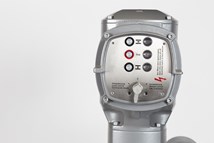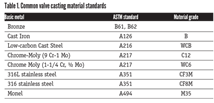Finding and Developing the People We Need
If industry is to address one of its most significant problems—the lack of skilled workers—it must face two realities: 1) the millennial generation, which in 2015 surpassed all other groups as the largest in the labor force, is significantly different than the generations that proceeded it, and 2) the toolbox for attracting and retaining millennials is different as a result.
Maureen Crawford Hentz, director of talent for A.W. Chesterton Company, says the key is finding ways that allow millennials to be part of a group. “One of the first things you have to realize is that with millennials, the group comes first and individual achievement within that group comes second. In previous generations, that dynamic was flipped,” she says.
Hentz recently shared with VMA what went into the Love Where You Work program she helped to create for her company.
MILLENNIAL PSYCHOLOGY
Hentz says one of the biggest differences between generations is that millennials have been team trained.
“Note that I do not mean they are team oriented; Millennials are no more team oriented than other people. However, they have been socialized in their learning processes to work as teams, which contrasts with Generation X and Boomers, whose members were trained to bring themselves up by the bootstraps,” she says.
A second major difference between generations is that millennials have a formulaic orientation towards success, Crawford Hentz explains.
“They’ve been brought up in an environment where there are defined points in time and tasks to accomplish to go from point A to point B—processes that help them move forward. If you’re taking karate, for example, you start with the white belt, then you get yellow, orange, etc., until you get to black,” she explains.
To appeal to the formulaic mentality, companies must develop a way for employees to measure or note the steps they take as they take them.
Another big difference between millennials and their predecessors is differing views on social responsibility. Millennials both expect a company to have a social conscience and will seek out those that do when considering places to work.
“Many people in this age category had mandatory social service projects in school or mandatory volunteer hours as part of their training,” she says. “They expect their employers to exist for reasons beyond the bottom line.”
Millennials also see their individual efforts differently than Generation X and Boomers. They judge themselves not as much on specific results, but in terms of efforts and where they are in the process.
“Millennials tend to value their efforts being rewarded whereas Xers and Boomers want the results rewarded,” she says.
ENGAGEMENT AND MENTORING
All of these realities about who millennials are go into how to put together a mentoring program and why such programs work.
Chesterton’s Love Where You Work program, for example, is based on the concept of, “You drive, We assist.” What that means is that the program “is not a cradle-to-grave experience. It’s more a range of different programs that employees can choose that helps them develop into who they want to be and what the company needs them to be good at, for the future,” Crawford Hentz says.
Two of the key programs at Chesterton are on-boarding and mentoring.
On-boarding is what happens when a person first joins the company. Employees get a passport that outlines various activities—everything from safety training to “meet and greets,” which are informational interviews with company insiders. Activities have point values, and employees must earn 100 points in their first 90 days, then can participate in the activities they pick.
“These activities are built for both extroverts and introverts. They are designed both to explain the company, its history and its corporate thinking and causes, and for individuals to begin to assess where they fit into the picture,” she says.
MENTORING
The second component of Love Where You Work is a formal 12-week mentoring program, which is designed both to deepen the engagement process and to help the company develop its mentoring capability.
As with onboarding, components are self-selected: Employees choose a wide range of options—from ride-along programs where employees get out into the system by choosing to spend time with a particular person to formal training sessions.
People have to apply both to be mentees and to be mentors and the two are matched up based on the mentee’s goals and what skills the mentor has. The key is the interaction, growth and development that occurs between the two. To kick off the 12-week program, the mentor and mentee attend training together to get comfortable with their new roles. After that training, the mentors and mentees meet periodically and participate in activities together or discussions about activities.
“Any activity can be developmental as long as it’s discussed afterwards,” Hentz says. “Too often in business we spend so much of our time doing, we don’t leave time for talking and analyzing what we’re doing,” she points out.
Mentoring is beneficial to industry and to Chesterton for another critical reason: It helps the company identify and build capacity for all employees to be mentors.
“We believe that mentoring is a skill that goes way beyond supervising,” Crawford Hentz says. “Supervisors are task-oriented. They are obligated to be more directive. Mentors can help a person identify obstacles, get beyond them and set new milestones or goals for themselves,” she adds.
MEASURING THE RESULTS
Love Where You Work has only been around about a year, but Chesterton and Crawford Hentz are seeing positive results.
“It’s a new way of seeing things, so people were dubious at the beginning. That first group of mentors/mentees was tapped to participate and without exception, they said they signed up because when the president asked them to do something, they considered it an honor,” Hentz says.
However, each group has become much more specific about how much they value the program and what it’s done to help them personally.
“We have people saying things such as: It was the best thing I’ve ever done. It took me out of my comfort zone and gave me confidence. It helped me know what I was worth to the company,” Crawford Hentz says.
As more and more people apply for the program, the company has integrated the Lominger Competencies, which allows a company to pinpoint specific skills it needs from employees and how those develop as a result of participation in mentoring.
“If we’re doing this right, what we’ll see is that employee competency ratings will go up during performance appraisals,” she says.
APPEALING TO EVERYONE
Mentoring and employee engagement is not just about millennials. It’s about all employees. “We have one mentee who had been here 21 years; we had a mentor that had been here just three,” Crawford Hentz says.
The program is designed to get the entire company’s talent pool to become more engaged in their jobs, to set their own goals and to create steps for attaining those goals.
“We stress to our staff that development is not about becoming a new person but becoming a better version of yourself,” she concludes.
Genilee Parente is managing editor of 名媛直播 Magazine. Reach her at gparente@vma.org.
RELATED CONTENT
-
Air Valves in Piping Systems
Liquid piping systems are prone to collecting air from incoming fluids, pumps and connections.
-
Introduction to Pressure Relief Devices - Part 1
When the pressure inside equipment such as boilers or pressure vessels increases beyond a specified value, the excess pressure may result in a catastrophic failure.
-
Differences Between Double Block and Bleed and Double Isolation
There is an important distinction between DBB and DIB, as they often fall under the same category and are used interchangeably within the industry.







 Unloading large gate valve.jpg;maxWidth=214)